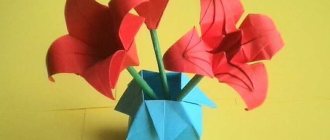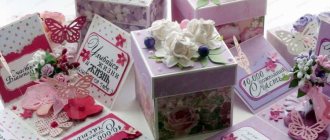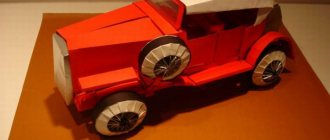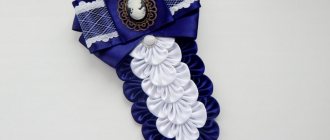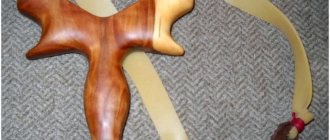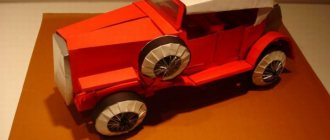how to make a vase out of paper
Even a paper craft can be an excellent gift if it is made with love. Do you want to know how to make a paper vase with your own hands? Here are some examples for you to get creative.
Origami vases or handmade crafts are not just acceptable home decor options but also suitable gifts for your friends or family. But first, you have to do something, and one of the first things you need is an idea. Many ideas. That's why this article was written and why you're here. The article presents different models of paper vases that anyone can make, regardless of skill level.
Made of glass with shiny decor
How to make a vase from a glass bottle or jar? To do this, thoroughly clean the selected container with mild detergents containing alcohol so that no traces of grease or dirt remain.
- How to prepare essays on physical education
How to crochet beautiful napkins: tips with video lessons and patterns
How to make a doll from nylon tights and padding polyester with your own hands
Then abstract stripes (even or asymmetrical) are applied with construction tape (diameter 3-5 cm). Meanwhile, the modeling gel is mixed with glitter and spread over the surface with a sponge using light pats. After staining, remove the tape before the gel has dried, otherwise it will be difficult to separate it later.
From the deck
To make a wooden container with your own hands, part of the deck is cut to the required size. The bark can be removed or left, it all depends on what effect the master wants to achieve. An electric drill is used to create a recess.
After this, the blind hole is treated with sandpaper. The outside of the wood is treated with stain. Next, place a container of water inside and place a bouquet of flowers in it. The vase-deck will look good in the garden or as a floor decoration in a country cottage.
From a can
Do-it-yourself floor vases are made from the following materials:
- 2 glass jars with a volume of 3-10 l;
- tea saucer;
- tin;
- glue;
- chicken egg carton;
- acrylic paints;
- hot glue;
- sparkles, rhinestones, large beads.
Make a flowerpot from a jar with your own hands as follows:
- First, prepare the base: 2 containers are glued together with hot glue. The saucer is used as a support: it is attached to the neck with the reverse side. The joints are additionally treated with hot adhesive and left for 24 hours.
- Then soak the egg carton in heated water for 2 hours. The resulting mass is applied to glass with glue. Due to this, the designer creates a special texture.
- When everything is dry, start painting. The workpiece is coated with a thick brush and white acrylic paints of a white shade. Before painting, the jar vase must be completely dry.
The drawing will look clearer if you first draw a sketch with a pencil. Small details are drawn with a thin brush. A day later, the image is decorated with beads and glitter gel.
Small vase
This cardboard vase looks very interesting. It is done as simply as possible, and to create it you will need:
- cardboard box;
- glue;
- compass;
- scissors;
- varnish
First of all, let's cut the box into parts to make it easier to work with. Then draw circles with a compass. Their size will depend on the size of your vase. You can make it big or small as you wish. Let's start with the largest circle. Each subsequent circle should be 3 mm smaller. The vase can be assembled in different shapes - narrowed towards the bottom or towards the top. We cut out the circles. And we begin to collect our vase. Depending on how you decide to assemble the vase, place the circles on top of each other, pre-lubricating each of them with glue.
Related article: Decorating a DIY gift with candy flowers for the New Year
The vase is ready. It can be coated with paint and then varnish, or you can use only varnish, preserving the original color of the cardboard and its texture. Looks very stylish!
Moreover, such a vase can be adapted not only for flowers, but also for anything.
From paper
How to make a vase out of paper? It will look unusual and original in the interior. First of all, you should print out a sheet with the outlines of leaves or flowers and carefully cut them out.
You can take a tall glass, measure its parameters and cut them, transfer them to colored paper and cut them. The sheet is wrapped around the glass and secured with double-sided tape. Then fold each leaf or flower in half and glue them with the fold to the workpiece.
You can use a base of different shades and textures. Your DIY paper vase is ready.
Tips for extending the life of cut flowers
Agree that cut flowers do not stay fresh as long as we would like. How to slow down the withering of flowers? To do this, it is important to minimize the growth of bacteria in the water, as well as to give the flowers the missing nutrition, replacing what they would have received if they had not been cut.
Learn how to extend the shelf life of cut flowers with these simple tips.
Trimming
Trim the ends of the stems at a 45-degree angle, at least 1.5 cm, to ensure better water absorption. It is best to trim them with sharp scissors, a serrated knife or pruning shears so as not to flatten the stem. It is best to trim the stems under cold running water. Thanks to this method, air will not be able to get into the veins and clog the “vessels” of the plant.
If you find that the flowers are starting to wilt, quickly prune them again.
Trim off any leaves or flower parts that fall below the rim of the vase. The only things that should be inside the vase are the stems and water.
Thanks to these actions, you can prevent the appearance of cloudy water and slimy stems, which cause flowers to spoil.
Preparing the vase
Bacteria and other microorganisms that may be on the surface of your vase can quickly cause your flowers to wilt. Be sure to thoroughly clean the vase beforehand with hot water, a little dish soap, and a little vinegar to kill any bacteria—even if it looks clean! Change the water frequently and re-wash the vase if the water becomes dark or has an unpleasant odor.
Location
When displaying flowers, look for a cool place, away from direct sunlight, to preserve the bouquets as long as possible. Beware of other heat sources, such as appliances or radiators, which can quickly cause flowers to wilt. For the most part, fruits and flowers don't go well together either. Many fruits, including bananas, avocados, apples and kiwis, produce a gas called ethylene. This gas can shorten the lifespan of any flowers stored nearby (as well as increase the rotting of any other fruits that do not contain ethylene), so try to keep these fruits and flowers separate from each other!
Adding a special solution for feeding
To extend the life of flowers, you can prepare a simple solution. It consists of just three main ingredients: citric acid, sugar and bleach. The solution is formulated to help flowers stay fresh longer, and each element has properties that are said to keep flowers longer than their normal lifespan with plain water.
Citric acid lowers the pH of the water, making it more suitable for freshly cut flowers.
Sugar acts as an actual "food" because flowers produce and consume sugar through the process of photosynthesis, and when they are cut they can no longer produce sugar. By adding sugar to the water, the flowers think they are still eating, which makes them perky.
Bleach acts as a water disinfectant and helps get rid of potentially harmful bacteria that may interfere with long-lasting blooms.
You can make your own flower food by following a few simple steps. It is made from ingredients that you most likely have in your home.
Original DIY vase ideas
The creative process for creating unusual items is different for each person, but it helps people make unusual things from ordinary objects. Therefore, craftsmen use a variety of ingredients to create a vase from scrap materials.
Decorating a glass container with pine cones
When you wander through a forest or planting with plantations of fir trees and pine trees, you involuntarily want to pick up the cones that are lying under your feet. From this natural material you can make various crafts for school and kindergarten. But they can also be used to create an unusually beautiful vase. To work you will need:
- gun glue;
- cones;
- glass container.
Progress:
- Wash the cones and separate each cell.
- Degrease the glass with acetone.
- Using hot glue, glue the parts of the cone onto the glass so that it is not visible.
- Let the product dry.
- Cover the pine cones with colorless varnish.
This vase looks great and you would never think that it is made from natural material that can be found under your feet while walking through a pine or spruce forest.
Vase made from a tin can and clothespins
An unusual vase is made from a tin can and disassembled clothespins. It is done very simply. The wooden clothespins need to be separated and the springs removed.
The flat side of the parts is glued with hot or wood glue to the surface of the jar over the entire area. They stick tightly to each other.
You can varnish the clothespins or paint them with multi-colored paints and then open them with varnish. In the middle, the parts of the clothespins are pulled together with a beautiful ribbon, and it is tied with a bow.
Decorating a glass jar with branches
You can make an original vase from any glass jar if you glue dry twigs to the surface of the container and cover them with varnish or apply a design on them in the form of an ornament.
Such a vase will last a long time and will decorate a home dominated by Japanese or Mediterranean style, as well as country style.
Important! A beautiful vase can be bought in a store, but if it is made with your own hands and according to your imagination, then it will delight the creator’s eye for a long time.
Any decor can be removed at any time and a new design can be invented again. This is useful for the development of imagination and for spending time together in the family, where the work of making a masterpiece can be entrusted to children.
Interesting option
In order to make such an interesting vase, we will need the following materials:
- cardboard tube;
- sheet cardboard;
- PVA glue and thermal glue;
- newspapers;
- paints;
- varnish
We measure the required pipe length. You can make a table or floor vase. We cut out the bottom from cardboard and glue it with hot glue, let it dry.
Our vase will be made of cardboard and paper, so the next step is to take newspapers and cut narrow strips of paper. Fold each strip in half, and then twist it into spirals, coating it with PVA glue or hot glue. Glue them to a cardboard tube. The space between the spirals can be filled with beads or beads, or you can use cereal or beans.
After all the spirals are glued and the glue has dried, you can start painting. Apply several layers of paint to the vase and leave until completely dry. Then we apply several layers of varnish and wait until it dries.
The vase is ready!
Full openwork
After the simplest models have been mastered, you can try to assemble a “carved” vessel with through openings in the walls. Openwork patterns at first glance seem to be something unattainable, but in fact there is nothing complicated about them. For example, a step-by-step diagram of assembling an origami vase from modules, and next to it the finished product.
And here’s what the main details of the openwork model look like in the form of symbols and in reality:
- Base rows. The modules are inserted with the long side forward.
- Arcs, thanks to which openwork openings are created. In the diagram they are indicated by single vertical rows.
- Arches that cover openings and give rigidity to the structure.
Master class on creating a luxurious openwork origami vase from triangular modules of two types 1/16 and 1/32:
